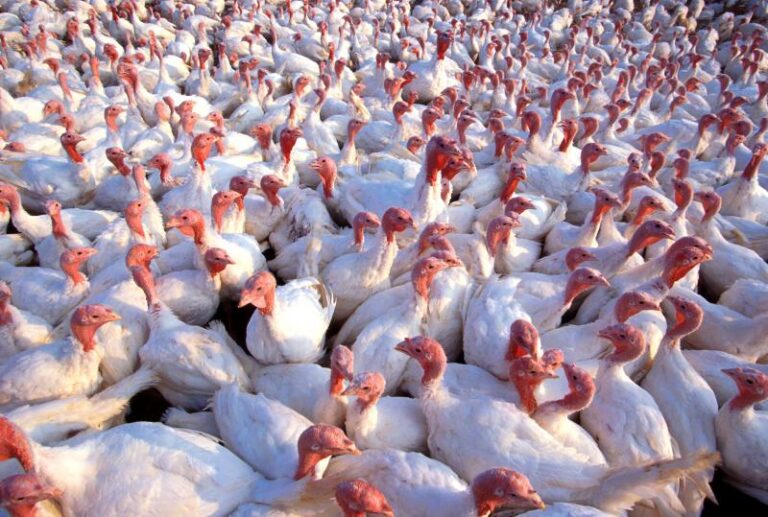Making a Thanksgiving feast will cost more this year as the pandemic’s effect on the economy drives up food prices.
Even economists like Curtis Dubay at the U.S. Chamber of Commerce notice the difference at the grocery store.
“We’re spending roughly $25 to $50 more per week on groceries for a family of five,” Dubary said during a panel on food inflation at the U.S. Chamber of Commerce.
As of September, grocery prices were up about 4.5% compared to the same time last year, says Jayson Lusk, an agricultural economist at Purdue University. Lusk says food inflation comes from increased global demand for groceries, an international backlog in shipping, rising transportation costs and labor shortages.
Frozen turkeys in the U.S. are 24% below the 3-year average because higher feed prices mean fewer farmers are raising them, according to the U.S. Department of Agriculture’s Economic Research Service.
Angela Faughtenberry, the owner of an operation called 413 Farm in Adair, Oklahoma says her 100 turkeys will sell for a higher price — from $6 to $8 a pound this year because of demand, something she says farmers expected due to labor shortages in the meat processing industry.
“We as farmers knew that when Thanksgiving got here, there’d be a (shortage of) turkey,” Faughtenberry said. “And after watching them get distributed at the supermarket, we’re seeing that shortage.”
Faughtenberry says feed is more expensive, but gas to drive turkeys to processing plants in Campbell, Texas, is her biggest expense. It can cost about $400 for two roundtrips.
Food prices rise every year, Lusk said.
“If you just plot the change in food prices over time, it’s going to look like an upward sloping trend,” Lusk said.
He says since wages have risen as well and people have more buying power. But lower-income families feel the pinch more acutely because a larger share of their incomes go-to food.
Lusk expects food price inflation to be temporary, but he’s not certain when it will fade.
“Is it five weeks, five months or five years? I don’t know the answer,” he said.
Andrew Harig, who works at the Food Marketing Institute said reducing the sluggish labor supply could help.
“It’s not a silver bullet,” he said. “It won’t solve all the problems, but it is the sort of necessary first step.”

